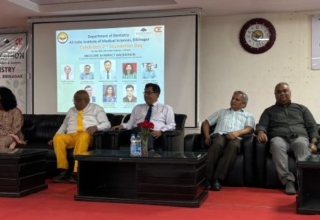Gastroschisis, a birth defect where the baby is born with their intestines protruding through a hole by the umbilicus has the greatest difference in mortality with 90% of babies dying in low-income countries compared with 1% in high-income countries. In high-income countries, most of these babies will be able to live a full life without disability. This is based on data by scientists from 74 countries who examined the risk of mortality for nearly 4,000 babies born with birth defects in 264 hospitals around the world.
Professor Justine Davies, one of the UK study leads from the University of Birmingham said: “The differences in life or death for babies born with these highly treatable conditions in high, middle, or low-income countries is tragic. It reflects the general lack of attention and investment given to surgery care in low- or middle-income countries. Most people living in high income countries take for granted that they can access high quality care if they or their children have a surgically treatable condition, but this is not a reality for most people in the world.”
Principal Investigator Dr Naomi Wright has devoted the last four years to studying these disparities in outcome. She said: “Geography should not determine outcomes for babies who have correctable surgical conditions. The Sustainable Development Goal to ‘end preventable deaths in newborns and children under 5 years old by 2030’ is unachievable without urgent action to improve surgical care for babies in low- and middle-income countries.”
The researchers are calling for a focus on improving surgical care for newborns in low- and middle-income countries globally.
Birth defects are now the fifth leading cause of death in children under 5 years of age globally, with most deaths occurring in the new-born period. Birth defects involving the intestinal tract have a particularly high mortality in low- and middle-income countries as many are not compatible with life without emergency surgical care after birth.
The study highlights the importance of perioperative care (the care received either side of the corrective operation or procedure) at the children’s surgical centre. Babies treated at hospitals without access to ventilation and intravenous nutrition when needed had a higher chance of dying. Furthermore, not having skilled anaesthetic support and not using a surgical safety checklist at the time of operation were associated with a higher chance of death.
Improving survival from these conditions in low- and middle-income countries involves three key elements:
- improving antenatal diagnosis and delivery at a hospital with children’s surgical care;
- improving surgical care for babies born in district hospitals, with safe and quick transfer to the children’s surgical centre; and
- improved perioperative care for babies at the children’s surgical centre.
This requires strong teamwork and planning between midwifery and obstetric teams, newborn and paediatric teams, and children’s surgical teams at the children’s surgical centre, alongside outreach education and networking with referring hospitals.
Alongside local initiatives, surgical care for newborns and children needs to be integrated into national and international child health policy and should no longer be neglected within global child health.








